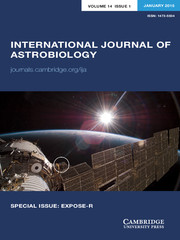Article contents
Life is determined by its environment
Published online by Cambridge University Press: 26 January 2016
Abstract
A well-developed theory of evolutionary biology requires understanding of the origins of life on Earth. However, the initial conditions (ontology) and causal (epistemology) bases on which physiology proceeded have more recently been called into question, given the teleologic nature of Darwinian evolutionary thinking. When evolutionary development is focused on cellular communication, a distinctly different perspective unfolds. The cellular communicative-molecular approach affords a logical progression for the evolutionary narrative based on the basic physiologic properties of the cell.
Critical to this appraisal is recognition of the cell as a fundamental reiterative unit of reciprocating communication that receives information from and reacts to epiphenomena to solve problems. Following the course of vertebrate physiology from its unicellular origins instead of its overt phenotypic appearances and functional associations provides a robust, predictive picture for the means by which complex physiology evolved from unicellular organisms. With this foreknowledge of physiologic principles, we can determine the fundamentals of Physiology based on cellular first principles using a logical, predictable method. Thus, evolutionary creativity on our planet can be viewed as a paradoxical product of boundary conditions that permit homeostatic moments of varying length and amplitude that can productively absorb a variety of epigenetic impacts to meet environmental challenges.
Keywords
- Type
- Review Article
- Information
- International Journal of Astrobiology , Volume 15 , Special Issue 4: The history and philosophy of the Origin of Life , October 2016 , pp. 345 - 350
- Copyright
- Copyright © Cambridge University Press 2016
References
- 15
- Cited by


